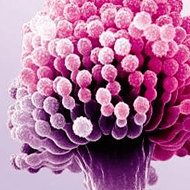High quality phospholipid price, extraction and purification technology
Time:2025-04-16The following are some advancements in phospholipid extraction and purification technologies:
I. Advancements in Extraction Technologies
Supercritical Fluid Extraction Technology: Supercritical carbon dioxide is commonly used as the extractant, which has the advantages of high extraction efficiency, high product purity, no solvent residue, and environmental friendliness. However, the large investment in equipment and high operation costs limit its large-scale industrial application. In recent years, studies have been dedicated to optimizing process parameters such as temperature, pressure, and extraction time to improve extraction efficiency and reduce costs. At the same time, some studies have also attempted to add cosolvents to improve the solubility of carbon dioxide in phospholipids and expand its application range.
Ultrasound-Assisted Extraction Technology: By utilizing the cavitation effect, mechanical effect, and thermal effect of ultrasonic waves, it accelerates the dissolution of phospholipids from raw materials, improves extraction efficiency, shortens the extraction time, and allows extraction to be carried out at a lower temperature, which is beneficial for protecting the biological activity of phospholipids. Researchers are constantly exploring the optimal ultrasonic parameters, such as frequency, power, extraction time, and temperature, to achieve an efficient and energy-saving extraction process. In addition, this technology is often combined with other extraction methods, such as the ultrasound-assisted solvent extraction method, to further improve the extraction rate and purity of phospholipids.
Microwave-Assisted Extraction Technology: Microwave energy can selectively heat the polar substances in raw materials, enabling phospholipids to be rapidly separated from the raw materials. It has the advantages of short extraction time, low solvent consumption, and high extraction rate. Currently, the research on microwave-assisted extraction of phospholipids mainly focuses on optimizing process conditions such as microwave power, extraction time, the type and amount of solvent to obtain the best extraction results. At the same time, in order to achieve industrial application, research is also being conducted on how to design efficient microwave extraction equipment to improve the stability and repeatability of the extraction process.
II. Advancements in Purification Technologies
Column Chromatography Separation Technology: It is one of the widely used methods for phospholipid purification, including silica gel column chromatography, aluminum oxide column chromatography, ion exchange column chromatography, etc. By selecting appropriate stationary phases and mobile phases, effective separation of different phospholipid components can be achieved. In recent years, the research and development of new chromatographic packing materials have become a research hotspot. For example, affinity chromatographic packing materials with special selectivity, efficient monolithic column packing materials, etc. These packing materials can improve separation efficiency and selectivity, reduce separation time and solvent consumption. At the same time, automated column chromatography separation equipment is also continuously evolving, which can achieve precise control and optimization of the separation process, and improve product quality and stability.
Membrane Separation Technology: It selectively separates phospholipid molecules using membranes with different pore sizes, and has the advantages of simple operation, no phase change, and energy saving. For example, ultrafiltration membranes can remove macromolecular impurities in phospholipids, such as proteins and polysaccharides; nanofiltration membranes and reverse osmosis membranes can further separate and purify phospholipids to improve their purity. With the development of membrane material science, high-performance membrane materials are constantly emerging, such as polyethersulfone membranes and polyvinylidene fluoride membranes with high selectivity, high flux, and good stability, providing better support for the application of membrane separation technology in phospholipid purification. In addition, the integrated application of membrane separation technology with other purification methods is gradually increasing. For example, the membrane separation-column chromatography combined process can achieve efficient and high-precision purification of phospholipids.
Enzymatic Purification Technology: Phospholipases are used to specifically hydrolyze phospholipids to remove unwanted fatty acids or other groups, thereby improving the purity and activity of phospholipids. Enzymatic purification has the advantages of mild reaction conditions, high selectivity, and environmental friendliness. In recent years, the development of genetic engineering technology has enabled the large-scale production of high-activity and high-specificity phospholipases, reducing the cost of enzymatic purification. At the same time, the application of enzyme immobilization technology has further improved the stability and reusability of enzymes, making the application prospect of enzymatic purification technology in phospholipid purification more promising. Researchers are also constantly exploring the optimal process conditions for enzymatic purification, such as the temperature of enzymatic hydrolysis, pH value, enzyme dosage, and reaction time, to achieve efficient purification and functional modification of phospholipids.


 CN
CN





